Roman civilization proved to be one of the most influential civilizations with its magnificent inventions. The inventions such as the Julian Calendar, Roman Numerals, Concrete, and the most popular festival Halloween are some of their inventions.
Romans took every aspect necessary to invent a new invention very sincerely and had perfection on their inventions.
Every invention they made had a direct or indirect impact on every individual. The most famous invention is the Roman Numerals which is still in use in every school and college.
Here is the list of the top 20 Ancient Roman Inventions with their details.
20. The Halloween
Content

Halloween which is celebrated worldwide by the people on the 31st of October was first celebrated by the Romans before 2000 years.
At first, it originated with the ancient Celtic festival of Samhain to mark the end of the harvest season. Also, this day meant New Year’s day for the Celtics.
At that time, the 1st of November was celebrated as All Saints Day. As, both Halloween and All Saints Day dealt with the afterlife, they were merged and celebrated together.
Also, the night before Halloween was known as All Hallows Eve. And, the main purpose of Halloween was to send back the dead and spirits by lighting the bonfire.
So, people started celebrating Halloween by wearing masks and vandalizing others’ properties. They also lighted bonfires and wore various costumes which would end up scaring others.
Then, the celebration of Halloween was caught up by the Americans around 1840 with Irish immigrants.
19. Corvus
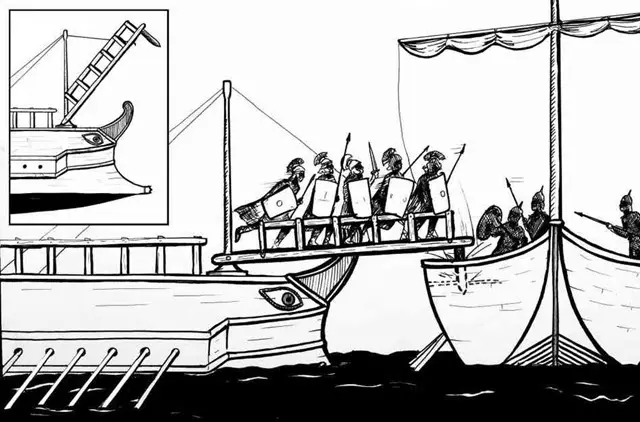
The wars around 264 BCE were mostly land-based wars but they changed their way after the invention of a very special device by the Romans.
Corvus, one of the major devices of that period was invented by the Romans to be used during the sea battles. It played a vital role in 256 BCE mainly during the Battle of Cape Ecnomus.
The device had a measurement of 1.2 m wide and 10.9 m long. It had a parapet on both sides.
The Corvus was built in a shape similar to the beak of the bird. It was done so to pierce enemies’ ships during the battle.
It was used in the First Punic War as the Roman naval boarding device and was built in the 3rd Century BCE.
18. Grid-Based Cities
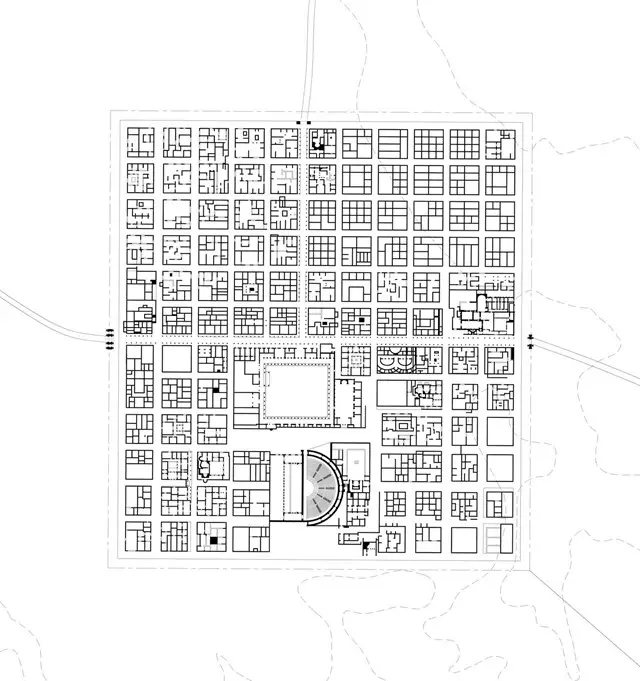
The grid-based cities were first planned by Harappa and Mahjong Daro, two famous cities of Pakistan and Indus city.
But, the plan was embraced and executed for the first by the Romans. They added the necessary dimension and made it more accurate and uniform.
Romans implemented the plan of forming a uniform grid to erase the monotonous-looking buildings.
The grids were either of square shapes or rectangular shapes. Roads or the streets were also made in a uniform manner.
The main two streets namely Decumanus and Cardo crossed each other at a right angle and were placed in the middle of the grid.
Besides streets, they also came up with buildings with various objectives such as buildings for public baths, theater, markets, and personal houses.
They also designed proper military camps with enough space for training. The overall plan removed the issues of clustered points and brought orderly nature all around.
17. Roads and Highways
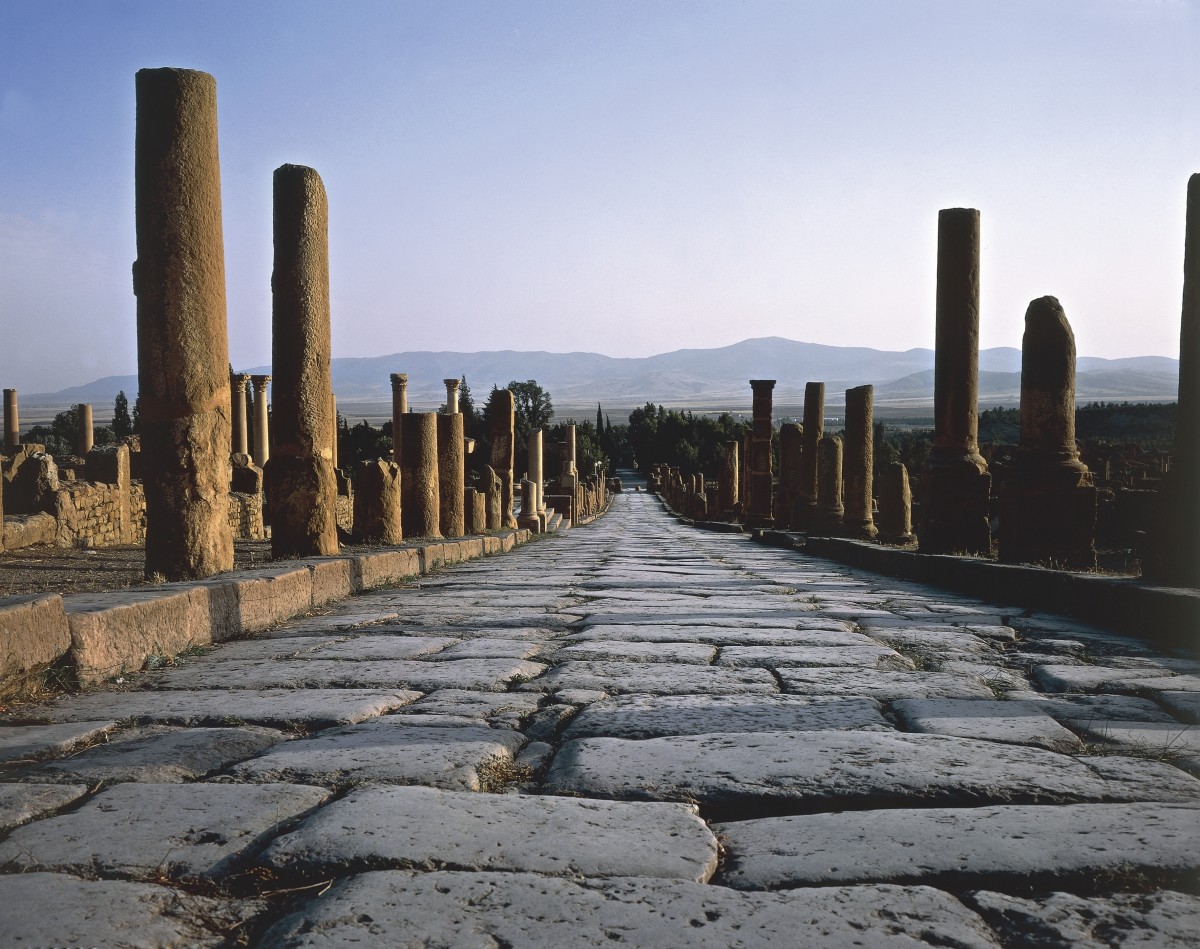
Every civilization had roads and highways however, the roads and highways invented by the Romans differed from every other civilization.
They had roads that were not just a mixture of rocks and gravel but used a mixture of gravel, dirt, and bricks.
The invention of such strong roads started before 200 AD and reached up to 50,000 miles long roads by then.
The bricks were made from the hardened volcanic granite which made the road stronger than roads of other civilizations. The old roads used in Rome prove it all.
Not only did they invent a strong mixture to build roads, but they also had banked on the sides to prevent the rainwater from coming onto the street and spoiling them.
Along with this, they had paved highways across Europe and around the Mediterranean basin. They also invented road signs and markings to indicate miles.
16. Laws like the Habeas Corpus
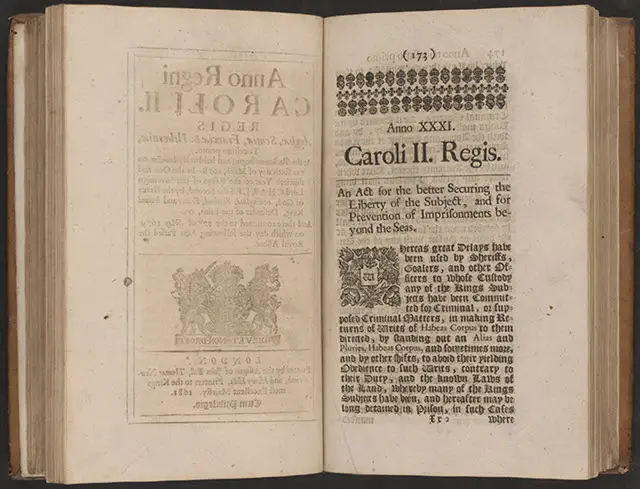
Numerous terms used in the legal system were invented by the Romans. These terms dominated western government and laws since their invention until today.
One of the most used laws was Habeas Corpus. Other terms used legally were Subpoena, pro bono, and affidavit.
These terms were mentioned under an essential code named of the Twelve Tables. These codes played a vital role in the constitution during the Republican era.
The codes were made during 450 BC which included laws related to property, divorce, religion, black magic, and numerous other legal things.
Though these laws were made thousands of years ago they are still in use due to their effectiveness, efficiency, and significance
15. The first newspaper
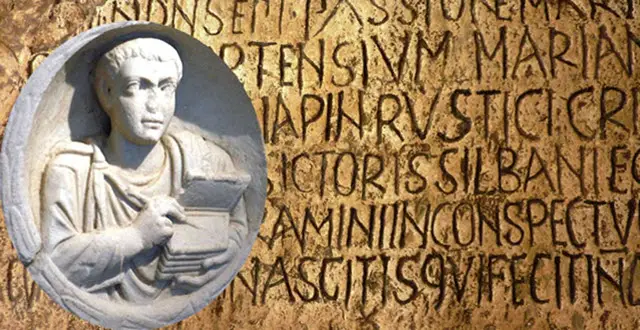
Source: Wikimedia Common
Romans were the first ones to implement the system of circulating written news. However, it was not done in papers as the papers were not used during that period.
Romans carved news in stones or in metal slabs and kept it in a public place for display. The slabs of stone with news on them were named as Acta Diurna meaning Daily Acts or Events.
This process of displaying news to the public began from 59 BCE and went on until 222 AD.
The content on the stones was similar to the news you get now as days in newspapers. It was compiled with news ranging from political to executions.
Romans kept the public aware of the daily events by broadcasting the news via Acta Diurna. It was an effective way and is considered to be one of the greatest ways to keep the public updated during that period.
14. Sanitary management and plumbing
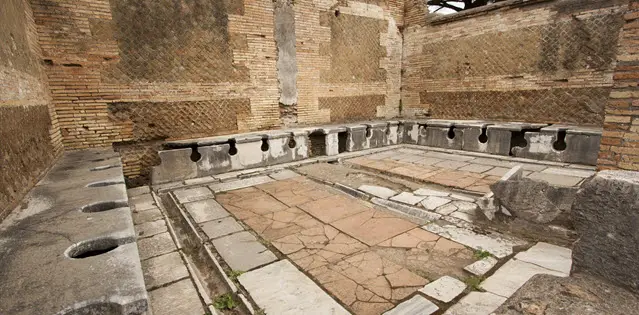
Source: Wikimedia Common
During the period of Roman civilization, numerous other civilizations had already started the sanitation system.
However, the sanitation system invented by the Romans was comparably more efficient and based on the needs of the public.
They had built not just the drainage system but also baths, interlinked sewage lines, latrines, and an effective plumbing system.
The water from the stream passed through the water pipes on a regular basis. The drainage system was flushed regularly with the stream water. This made the sewage and drainage system clean.
However, there still was one drawback of this system i.e the flushed water was dumped into the nearest river.
Though it was not the perfect way to maintain sanitation but was an effective way to control proper hygiene during that period. The streets and cities were any way safe from contamination due to proper plumbing.
13. Air conditioning

Source: Wikimedia Common
The houses before the invention of Air conditioning were lacking hot air during winters. Romans then invented a system that would lead to circulating hot air around the house.
It was done so by creating hollow spaces in columns. The purpose of keeping the hollow spaces in columns was when the air would rise up through space created it would heat the house in the process.
Though it was not like modern air conditioning, it was the most effective way to control the temperature and keep oneself warm during winters.
The air conditioning invented by the Romans can be seen in a few places nowadays as well.
12. Aqueducts
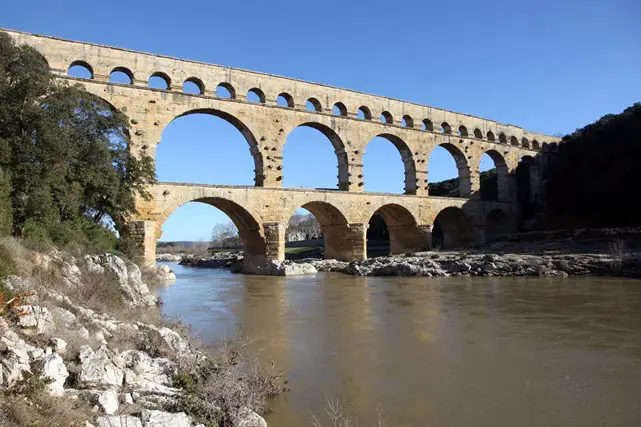
Source: Wikimedia Common
The Romans built the first aqueduct around 312 BC. they were dependent upon rivers and streams before the invention of a proper aqueduct.
The aqueducts were invented after taking numerous tests, the water was tested, the clarity was also checked, also the source rate of flow.
They also used the stream, rainwater, and stored water during harvesting. They were blessed with the water resource and managed to utilize it by inventing systematic aqueducts.
After testing and deciding the site to build the aqueduct it was done. The main source of water was spring. The depth of aqueducts was from 0.5 to 1 m beneath the ground’s surface.
One of the aqueducts namely The Trevi Fountain is still serviceable today. It is located in Rome and was made during the Roman civilization period.
11. Julian Calendar
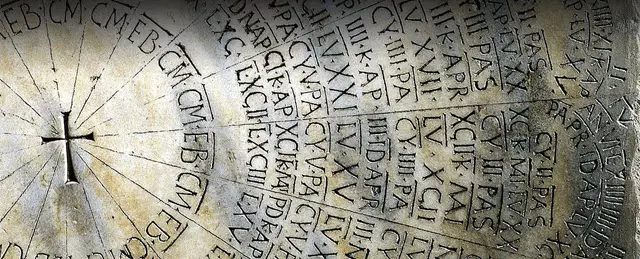
Source: Wikimedia Common
The track of time and date was kept before the invention of a formal calendar system however, it was not as effective as it became after its invention.
Before the invention of a formal and uniform calendar, people were involved in frauds which altered the actual working hours with fake hours.
The formal and systematic calendar system was proposed and introduced by Julius Caesar and so named as the Julian calendar system. It was done so to prevent ongoing fraud during working hours.
The calendar was fully based on the solar year which opposed the moon phase being used in Rome. It was completed in 46 BC and brought into action from 45 BC.
The newly invented calendar was more effective, accurate, and also included the system of a leap year.
Besides leap year, he also instituted the 12 months which would be included in one whole year.
10. Postal Services
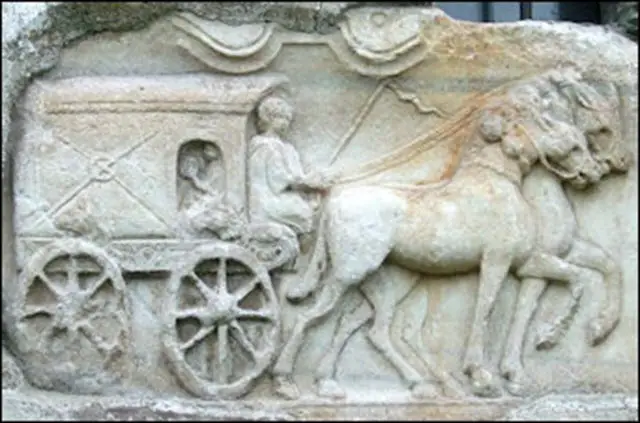
Source: Wikimedia Common
The postal service was brought into existence after Emperor Augustus founded the state-mandated and supervised courier and transportation service, the Cursus Publicus.
The messages mostly belong to the administration level or operation level. Numerous tasks were performed which include transporting messages, tax revenues between Italy and the province, and also transporting officials.
The major vehicle used during this process was the house cart. All the necessary messages and information were sent and received from one province to another with the help of the horse cart.
The postal service was still in function until the 6th Century around the Eastern Roman empire
9. Stadium
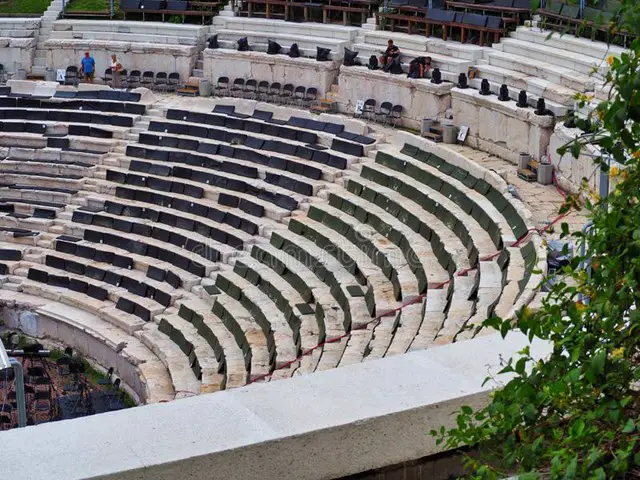
Source: Wikimedia Common
The Romans invented many buildings using their expert engineering skill. One of the most famous and used buildings was a stadium named the Colosseum.
The construction began in around 70 to 72 CE. The people involved in building this legend were Vespasian.
He did the work of building until his demise and after his demise in 79CE, the remaining levels were completed by his son, Titus, around 80 CE.
Though it was complete by 80 CE, the inaugural games were only held around 81 CE
The colosseum was mostly used for gladiatorial contests, such as a cinema hall, or to mock sea battles. Around 50000 to 80000 spectators would fit in that.
8. The first surgical tools
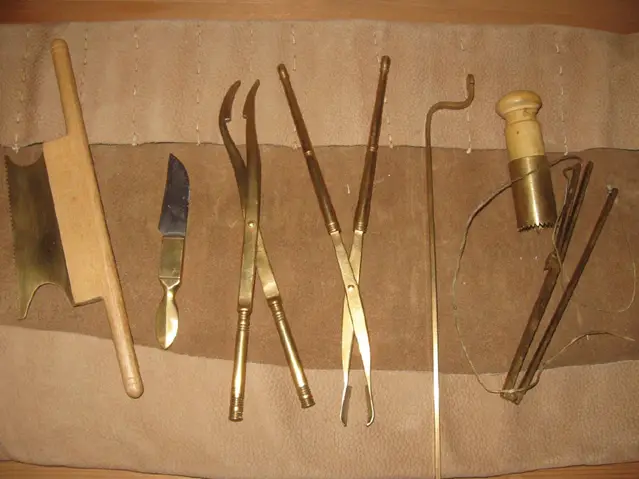
Source: Wikimedia Common
Romans developed the use of an early form of antiseptic in the process of surgery. Along with a clean antiseptic, they also developed a particular section famously known as the cesarean section.
The main purpose of inventing such medical equipment was to cure and treat the armies who were injured on the battlefield.
Like postal service, Augustus established a major military corps which was one of the first field surgery units.
They were well trained and skilled and helped save millions of lives on the battlefield using those tools.
Besides tools, they also focused on sanitary management in the military field. The treatments and surgeries helped in the long lives of the soldiers. This was all done after the 19th century.
7. Toga

Source: Wikimedia Common
Toga, an earliest dress worn by both males and females, was invented by the Romans.
The pictures and statues of people wearing Toga can be seen around 753 BCE. Though other civilizations like Greeks and Etruscans also wore Toga the invention of Romans was considered to be the true Toga.
The Toga was first worn by the first king, the erstwhile shepherd Romulus. It was then passed on to magistrates of Etruscan, and also to the third king of Rome, Tullus Hostilius.
Wearing of Toga, especially the purple-colored Toga, by the slaves and inferior class of people were banned under one of the strangest laws of Ancient Rome. Initially, only the Roman Emperors were allowed to wear Purple Toga.
6. The Codex
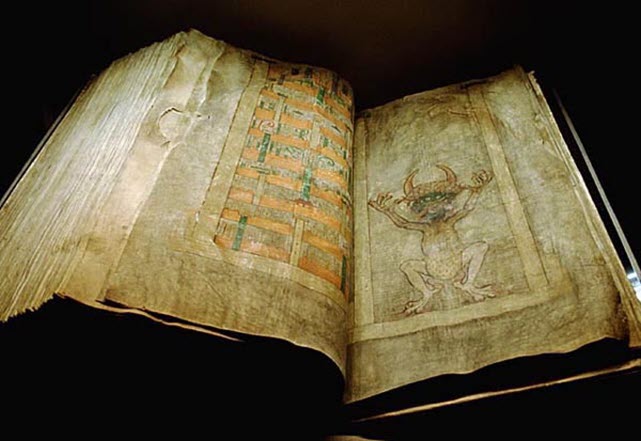
Source: Wikimedia Common
The Codex was invented by Julius Caesar to avoid the problem of storing the information on rocks and clay slabs. This invention started around the 1st Century.
Doing so it would take a lot of space and also make the environment look bad. So, he decided to use papyrus, a prehistoric paper used to store information, and formed a book.
The papyrus was gathered and folded together and was called the Codex or the first bounded book. The book could store a lot of information and also would not take much place
It was then used highly by the christians to jot down or to make codices of the bible. The codex is considered to be the first manifestation of the modern-day books.
5. Proper living standards
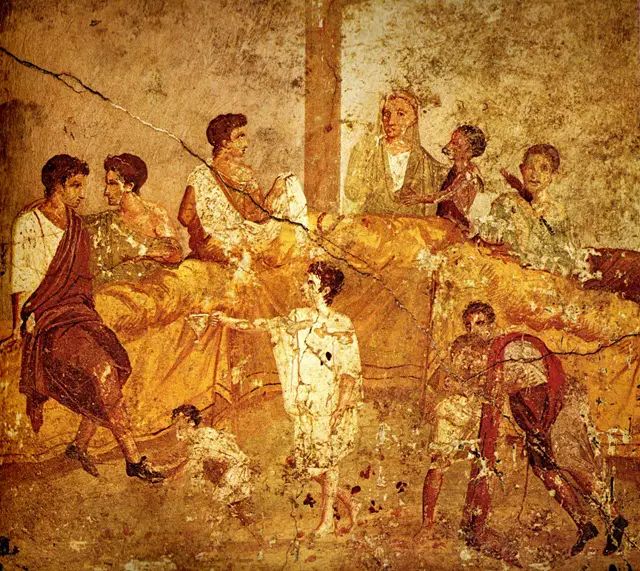
Source: Wikimedia Common
Social reform began under the rule of Tiberius Gracchus. Rich and poor were treated almost equally by the Romans.
Everyone was able to enjoy the welfare. Roman regime also managed to provide grains and necessary needs at a very low price.
It made the lives of people very easy and comfortable during that period. The living standards of people of every class was at a balanced level unlike other contemporaries of that time.
Also, people were given strict orders to not own land more than 500 jugera which is equal to 300 acres to make land available for everyone.
Along with this, Attalus III bequeath his property and his Kingdom to the people of Rome. Whole of this was equally distributed amongst the rich and poor by Gracchus.
4. The use of apartments
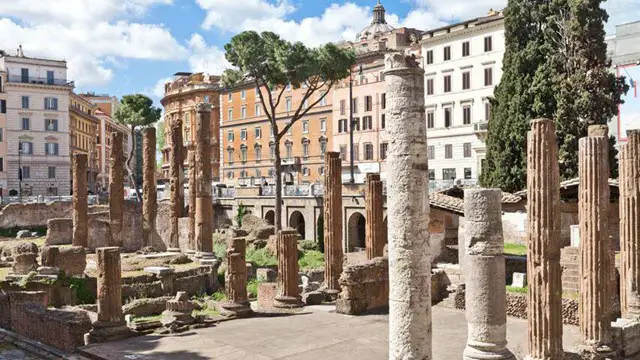
Source: Wikimedia Common
Another major invention of Romans was Apartment system. As the civilization went on growing there was a huge increase in population which led to the problem of land sharing.
People started problems with pieces of land for shelter. Then the Romans came up with an idea to build or stack floors on top of buildings to use the available space efficiently.
Romans called it insulae or apartments. People of low and middle law started living in apartments.
And, the rich who owned huge amounts of land made houses for themselves and lived without sharing with others.
An insula consisted of floors where the bottom floor was used for shops and it would to high up to 6 to 7 storeys.
The rent went on decreasing as you lived higher up on the building due to the problem of climbing more stairs and safety issues.
3. Concrete

Source: Wikimedia Common
Romans wanted to have a very strong built building that would last for a very long period of time. So, they invented a material which would make the building stronger than ever.
It was concrete which helped to make the building strong as well as add structural integrity to all their designs and buildings.
They called it concrete which is now famously known as hydraulic cement-based concrete.
Some of the buildings built during the period of roman civilization are still standing still and high until today.
One of the most famous buildings built using concrete is the Pantheon in Rome having a 42 meter diameter dome.
The whole dome consists of properly poured concrete. The name concrete meant to grow together, and is a Latin word. It was invented around the 3rd Century.
2. Arches
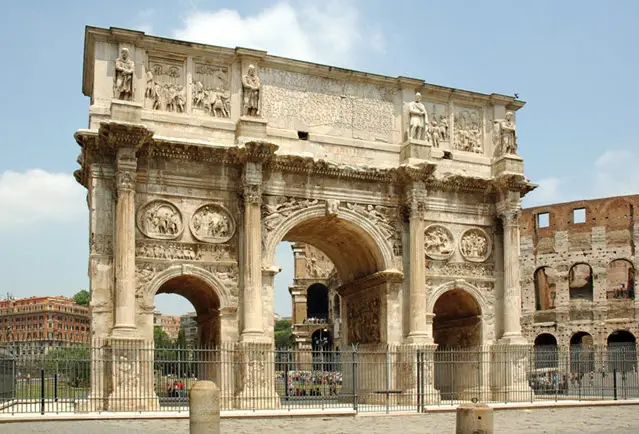
Source: Wikimedia Common
Though Arches were not invented by the Romans but rather by the ancient Egyptians, Greeks, and Babylonians
The proper development of the arches was done by the Romans. They used by modifying the basic design by creating various art works on them.
Arches were preferred by the Romans as it would carry a higher load than the staringt beam. Also it made the buildings and structure look more attractive and attract more people towards it.
They also used the arches to create vaulted ceilings and dome roofs. The vaulted ceilings were strong enough to hold hundreds of people.
The arches had a wedged-shaped stone or the keystone placed on top of the arch, it used to placed as the last stone before the completion of the construction.
1. Roman Numerals
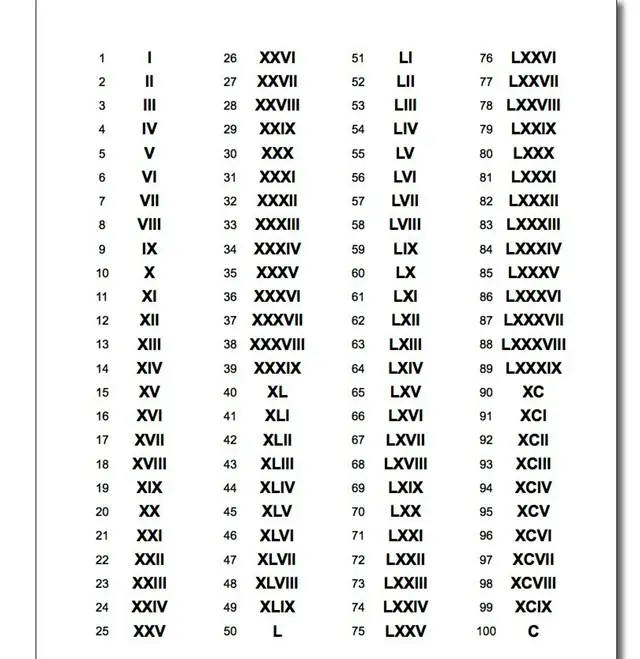
Source: Wikimedia Common
Roman numerals, one of the most popular number systems, was invented by the Romans.
The number system is still taught in every school or college all over the world. The Roman numerals were first used around 900 – 800 BC but were developed around 500 BC.
Before that, the counting number system developed by the Greeks was in use. The Roman numerals were invented to make the counting system more uniform, effective, and simple.
The basic symbols used in the Roman Numerals are I, V, X, C, D, and M. The whole numerals were then developed using these seven main letters.
I mean one finger, V meaning five fingers, and X meaning showing both hands that is ten fingers.
Conclusion:
Romans wanted an expertise work in everything they did, be it roads, sewage, dress, or any form of constructions. Their every invention is used until today as they were made with perfect farsightedness.
The major 20 inventions are mentioned above however, there are numerous other inventions made by the Romans. The other inventions include wood, cranes, human power, animal power, and Carts.

Hi 🙂 this was very helpful and saved me from failure at school
that is nie
This did not help at all. All it did was told me facts.
yes this was incredible hepful so i have to say thx so much
yes this was incredible hepful so i have to say thx so much